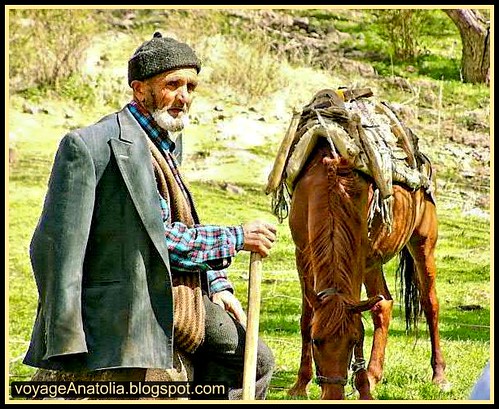
The Richest Man on Earth as Solon Described Him, originally uploaded by voyageAnatolia.
Croesus, the Lydian king asked Solon:
"Tell me Solon!..." "Who is the happiest man on this Earth?"
"Tellus...!" said Solon... "He had both beautiful and good children, and he saw all his grandchildren from birth and all remaining alive..."
Croesus dissapointed... What a humble answer was that?! Croesus had considered himself to be the happiest man alive. He was the king of the people to introduce the use of gold and silver coins. He had ancient finance markets. The name of Croesus of Lydia became synonymous with wealth. Of course he was waiting some respect and appreciation of that:
"You are the Greatest His Majesty ! ... Every one knows that ! ..."
But instead Solon had advised him wisely, "Count no man happy until he be dead," because at any minute, fortune might turn on even the happiest man and make his life miserable. "
You might think this old man looks quite poor. We met him during hiking at mid-Anatolian highlands. He wears warm wool clothes, he has a small horse. He lives in a village. He has a family. He grows his own food with organic fertilizers he prepared. No hormones, no chemicals, no genetically modified (GM) food. He knows what his family eats. He cuts his own walking stick. He builds his home. He walks. He raised children and grand children. He does not need big cities, job, wage, money. He has an earth and nature to rely on. He does not care the financial markets crisis. He does not need anything but nature. I think he is the richest man on Earth as Solon described him, unless we do not destroy his earth and nature...